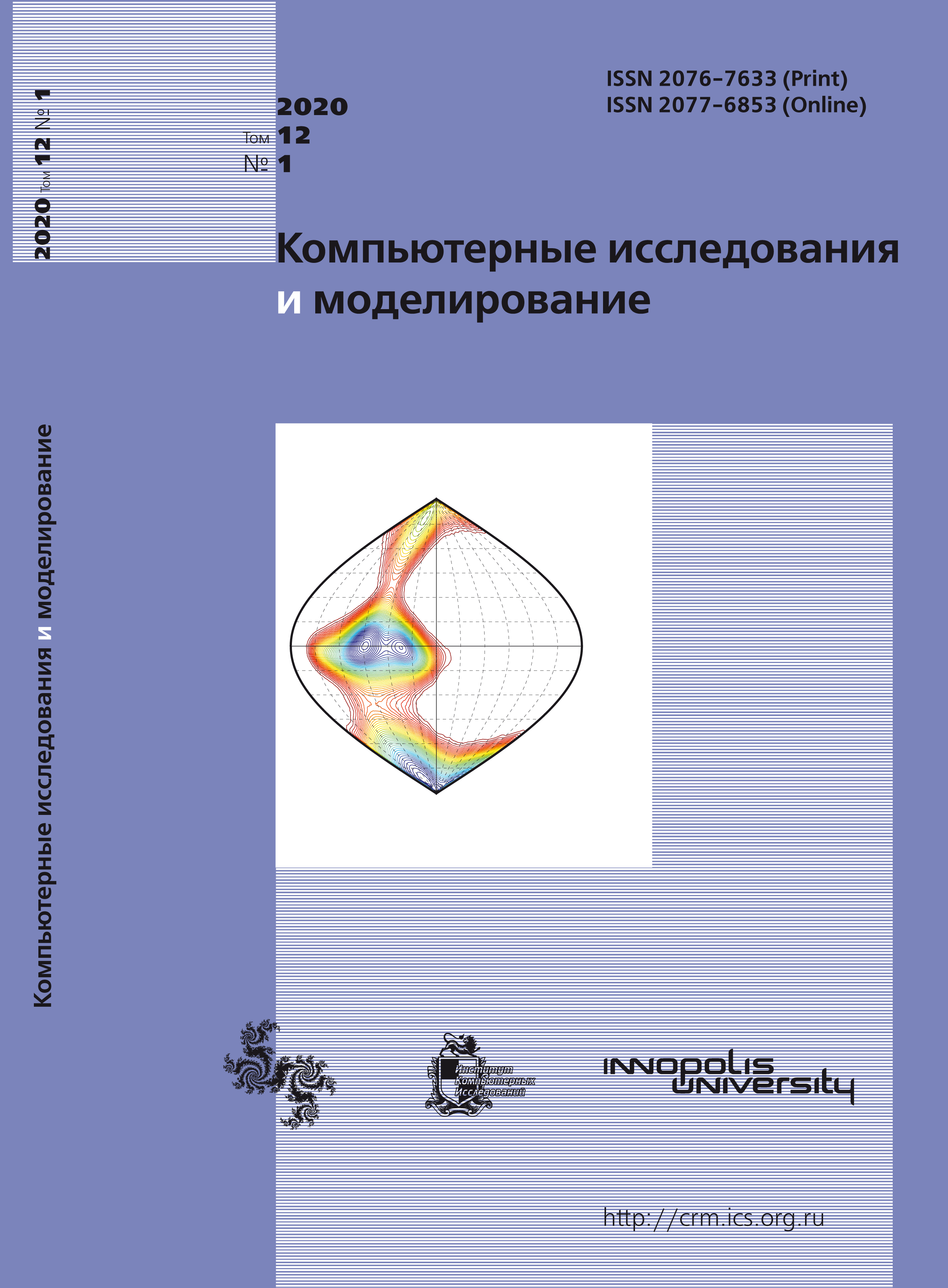All issues
- 2025 Vol. 17
- 2024 Vol. 16
- 2023 Vol. 15
- 2022 Vol. 14
- 2021 Vol. 13
- 2020 Vol. 12
- 2019 Vol. 11
- 2018 Vol. 10
- 2017 Vol. 9
- 2016 Vol. 8
- 2015 Vol. 7
- 2014 Vol. 6
- 2013 Vol. 5
- 2012 Vol. 4
- 2011 Vol. 3
- 2010 Vol. 2
- 2009 Vol. 1
Numerical modeling of the natural convection of a non-Newtonian fluid in a closed cavity
 pdf (1425K)
pdf (1425K)
In this paper, a time-dependent natural convective heat transfer in a closed square cavity filled with non- Newtonian fluid was considered in the presence of an isothermal energy source located on the lower wall of the region under consideration. The vertical boundaries were kept at constant low temperature, while the horizontal walls were completely insulated. The behavior of a non-Newtonian fluid was described by the Ostwald de Ville power law. The process under study was described by transient partial differential equations using dimensionless non-primitive variables “stream function – vorticity – temperature”. This method allows excluding the pressure field from the number of unknown parameters, while the non-dimensionalization allows generalizing the obtained results to a variety of physical formulations. The considered mathematical model with the corresponding boundary conditions was solved on the basis of the finite difference method. The algebraic equation for the stream function was solved by the method of successive lower relaxation. Discrete analogs of the vorticity equation and energy equation were solved by the Thomas algorithm. The developed numerical algorithm was tested in detail on a class of model problems and good agreement with other authors was achieved. Also during the study, the mesh sensitivity analysis was performed that allows choosing the optimal mesh.
As a result of numerical simulation of unsteady natural convection of a non-Newtonian power-law fluid in a closed square cavity with a local isothermal energy source, the influence of governing parameters was analyzed including the impact of the Rayleigh number in the range 104–106, power-law index $n = 0.6–1.4$, and also the position of the heating element on the flow structure and heat transfer performance inside the cavity. The analysis was carried out on the basis of the obtained distributions of streamlines and isotherms in the cavity, as well as on the basis of the dependences of the average Nusselt number. As a result, it was established that pseudoplastic fluids $(n < 1)$ intensify heat removal from the heater surface. The increase in the Rayleigh number and the central location of the heating element also correspond to the effective cooling of the heat source.
Copyright © 2020 Loenko D.S., Sheremet M.A.
Indexed in Scopus
Full-text version of the journal is also available on the web site of the scientific electronic library eLIBRARY.RU
The journal is included in the Russian Science Citation Index
The journal is included in the RSCI
International Interdisciplinary Conference "Mathematics. Computing. Education"






